As the leading country in health-sciences output in the Nature Index, the United States’ Share is almost 8,500, higher than the next 10 leading countries combined. As a result, US institutions feature prominently among the leading research organizations for the subject, with 30 of the top 50 being based there.
The country’s dominance means that it comes top for Share in all but seven of the journals tracked by the Nature Index in the subject. This includes large general journals such as Nature Communications and specialist medical publications such as The New England Journal of Medicine. PLOS Medicine and Gut are two examples where authors based elsewhere (the United Kingdom and China) made the largest contribution.
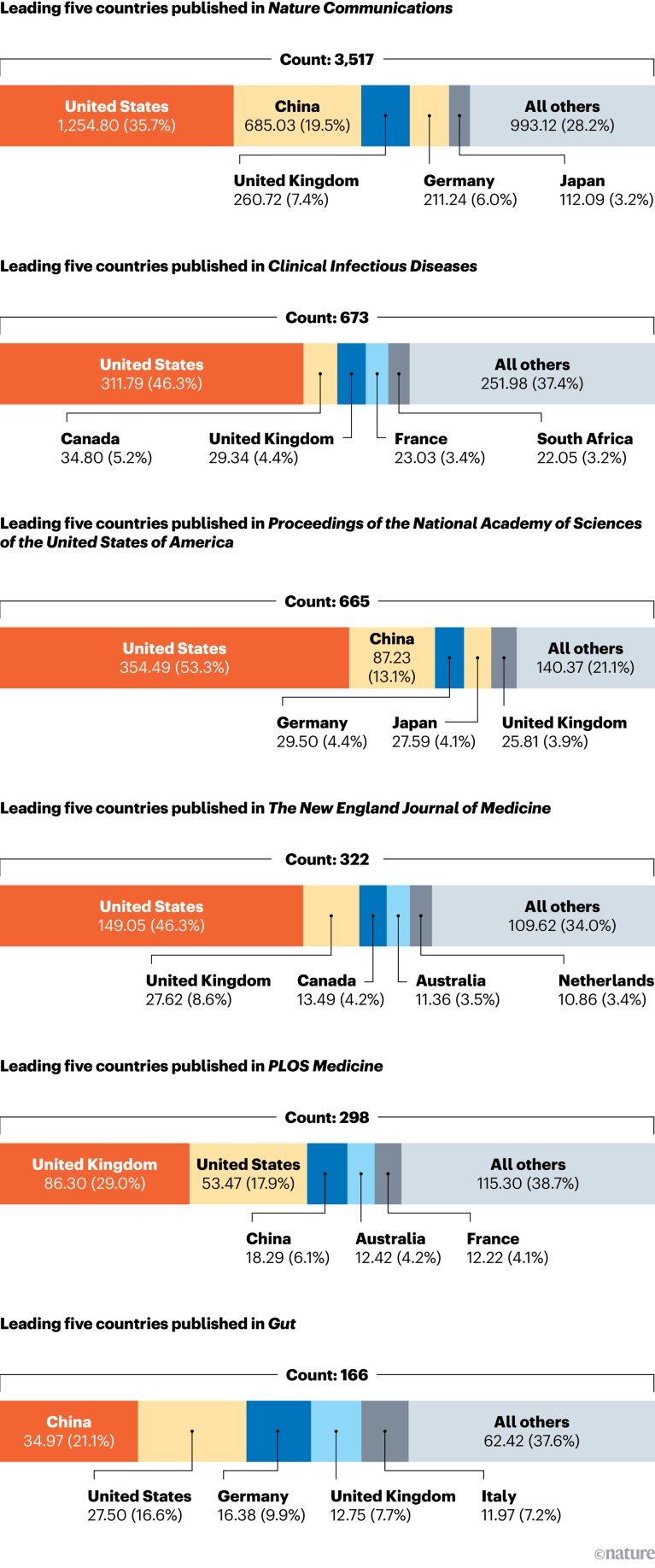
Source: Nature Index. Data analysis by Aayush Kagathra. Infographic by Simon Baker, Bec Crew and Tanner Maxwell.
The United States is the clear frontrunner among the leading five countries for health-sciences research, with a Share almost four times higher than China, in second place. The United Kingdom is third, with a Share of almost 1,500, a higher placing than its fourth position overall in the Nature Index.
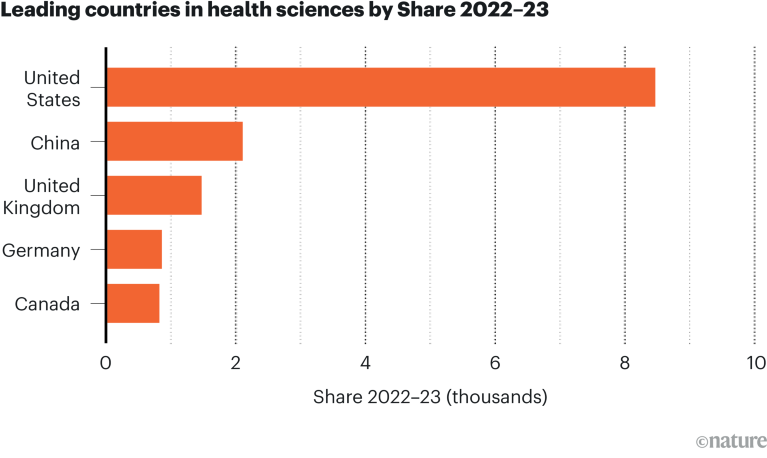
Source: Nature Index. Data analysis by Aayush Kagathra. Infographic by Simon Baker, Bec Crew and Tanner Maxwell.
Out of the top 25 countries for health-sciences articles in the Nature Index, five nations have a Share that makes up at least 29% of their overall footprint in the database across all subjects. Denmark, whose research is boosted by the success of companies such as Novo Nordisk, has the highest ratio in this regard at almost 40%.
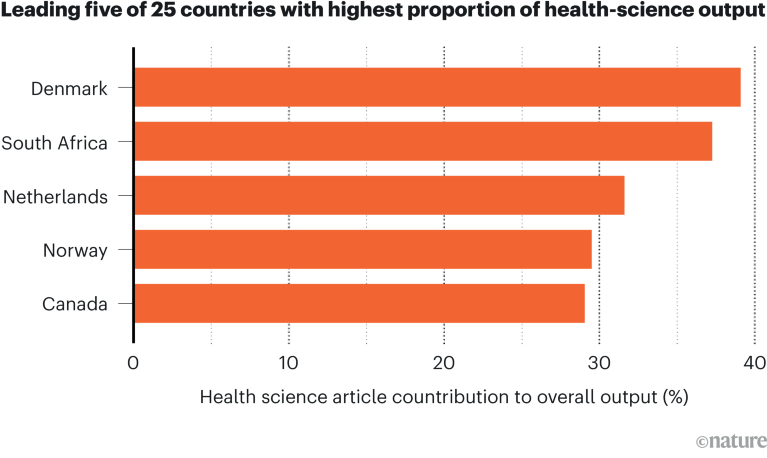
Source: Nature Index. Data analysis by Aayush Kagathra. Infographic by Simon Baker, Bec Crew and Tanner Maxwell.
As Harvard University, in Cambridge, Massachusetts, is the leading institution for high-quality health-sciences research, its involvement in the top institutional partnership in the field is no surprise. But its dominance does not extend to all the other leading collaborations, some of which involve institutions outside the United States.
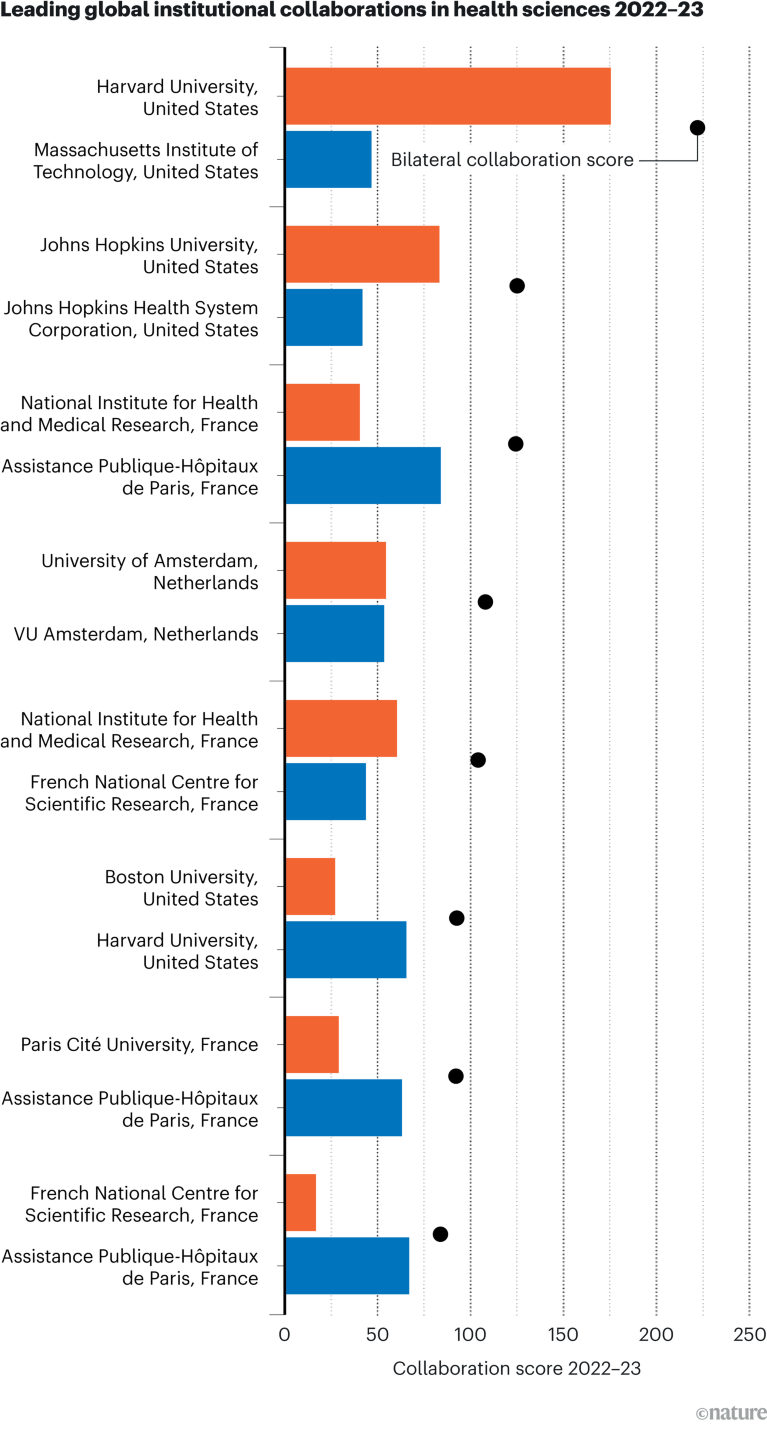
Source: Nature Index. Data analysis by Aayush Kagathra. Infographic by Simon Baker, Bec Crew and Tanner Maxwell.
The difference in Nature Index health-sciences output between the leading academic institution, Harvard University in Cambridge, Massachusetts, and other top institutions is a Share of more than 600. Compared with Harvard, most of the leading institutions also have a lower proportion of their overall Nature Index output in health sciences.
The University of Toronto in Canada and Johns Hopkins University in Baltimore, Maryland, are the only other academic institutions with a health-sciences Share of over 200. They also have a relatively strong focus on health sciences, with over 35% of their overall Nature Index research output in the subject area.
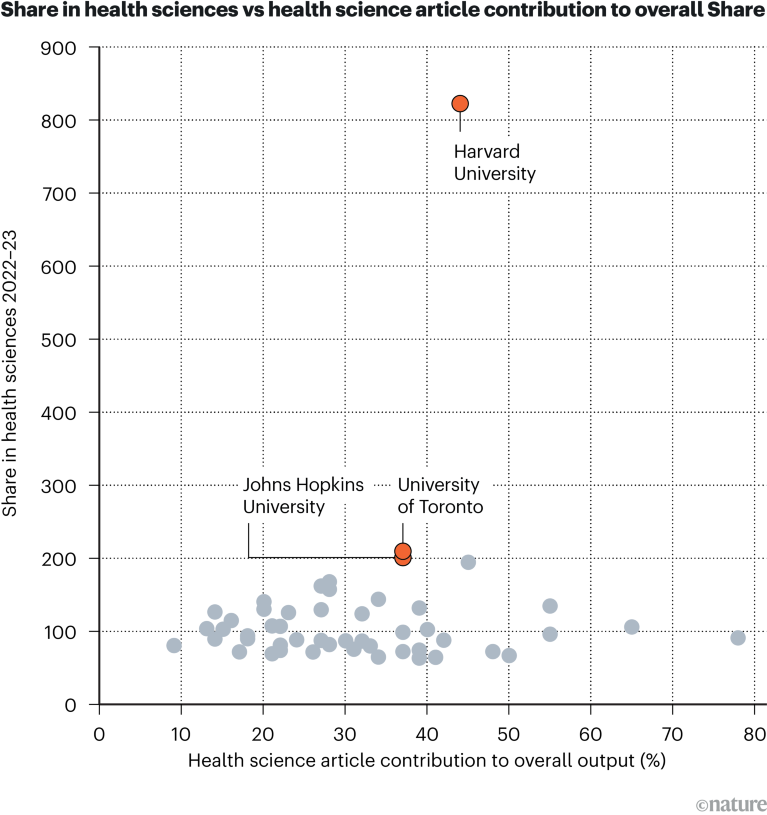
Source: Nature Index. Data analysis by Aayush Kagathra. Infographic by Simon Baker, Bec Crew and Tanner Maxwell.

 A spotlight on the stark imbalances of global health research
A spotlight on the stark imbalances of global health research
 How AI is being used to accelerate clinical trials
How AI is being used to accelerate clinical trials
 Four change-makers seek impact in medical research
Four change-makers seek impact in medical research
 Researchers call for a major rethink of how Alzheimer’s treatments are evaluated
Researchers call for a major rethink of how Alzheimer’s treatments are evaluated
 Take these steps to accelerate the path to gender equity in health sciences
Take these steps to accelerate the path to gender equity in health sciences








